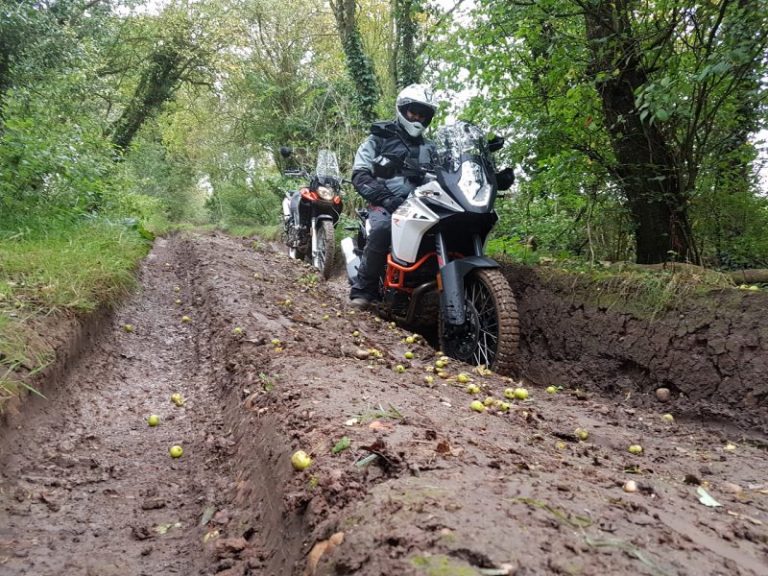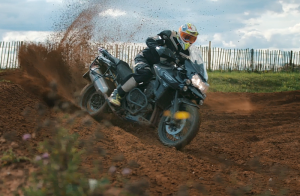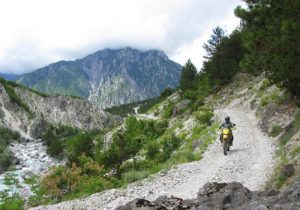Boyd Emmerich talks us through the best way for a novice off-road rider to steer accurately…
Steering your bike with accuracy on the rough stuff is a critical skill for the successful off-road rider. Failure to do so will inevitably end in tears, so it’s important that you know how. I don’t know how many times I’ve heard people say ‘the bike just veered into a rock and I was down,’ or ‘the front wheel climbed out of a rut then I came off!’ No, actually, you failed to steer with enough accuracy because you weren’t in control, therefore you crashed. The bike didn’t just veer off or decide to throw you a curve ball and climb up the edge of a rut.
Everyone, when starting out, will have had trouble tackling ruts. Success when riding ruts is all about steering, so it’s worth knowing how to steer accurately. Firstly, we need to be in the standing position. As you stand up your body position moves forward, weighting the front wheel which gives it bite. Also, your weight comes off the seat and all goes down through the pegs, which lowers the centre of gravity of the bike, making it more stable.
Next, choose a suitable speed. Obviously, in ruts you would be advised to keep the speed down, but if you go at a snail’s pace the bike won’t have enough momentum to be stable. In deep ruts, I’d say about 5mph (roughly running pace) is good if you’re still learning. Throttle control needs to be smooth, with no sharp closing or opening, as that could make the bike wobble. Hit the edge of a rut and you’re probably just about to come off.
Vision should be up and forward. Don’t look just in front of the bike. You need to get your head up and plan ahead, though the occasional glimpse closer is permitted.
Now, the actual steering bit, which is not only applicable to ruts, but all surfaces however technical. To start with, consider steering and balancing to be the same thing. As you stand on the bike, imagine you are balancing on a two-foot plank pivoted at the middle. To balance, you need to subtlety weight either side through your boots. On the bike, either end of the plank are the foot pegs. So, you are weighting the foot pegs to balance and steer the bike. If you want to go slightly right, weight the right peg and vice-versa. If you try this you’ll also realise that you can’t grip the tank with your knees because it locks your legs and you are unable to weight the pegs, therefore you can’t steer. So, legs need to be loose and off the tank.
So, we are now in our rut, bike smoothly up to about 5mph (momentum holding, giving stability), standing (front wheel bite, low centre of gravity), vision about 10 to 15 feet ahead, and legs off the tank. It’s time to balance, balance, balance! This technique will also give accuracy on any surface at higher speeds (look further ahead if you’re going faster), giving you good control of your bike. It’s something you need to practice in order to conquer but, if you stick at it, your confidence will build nicely.





